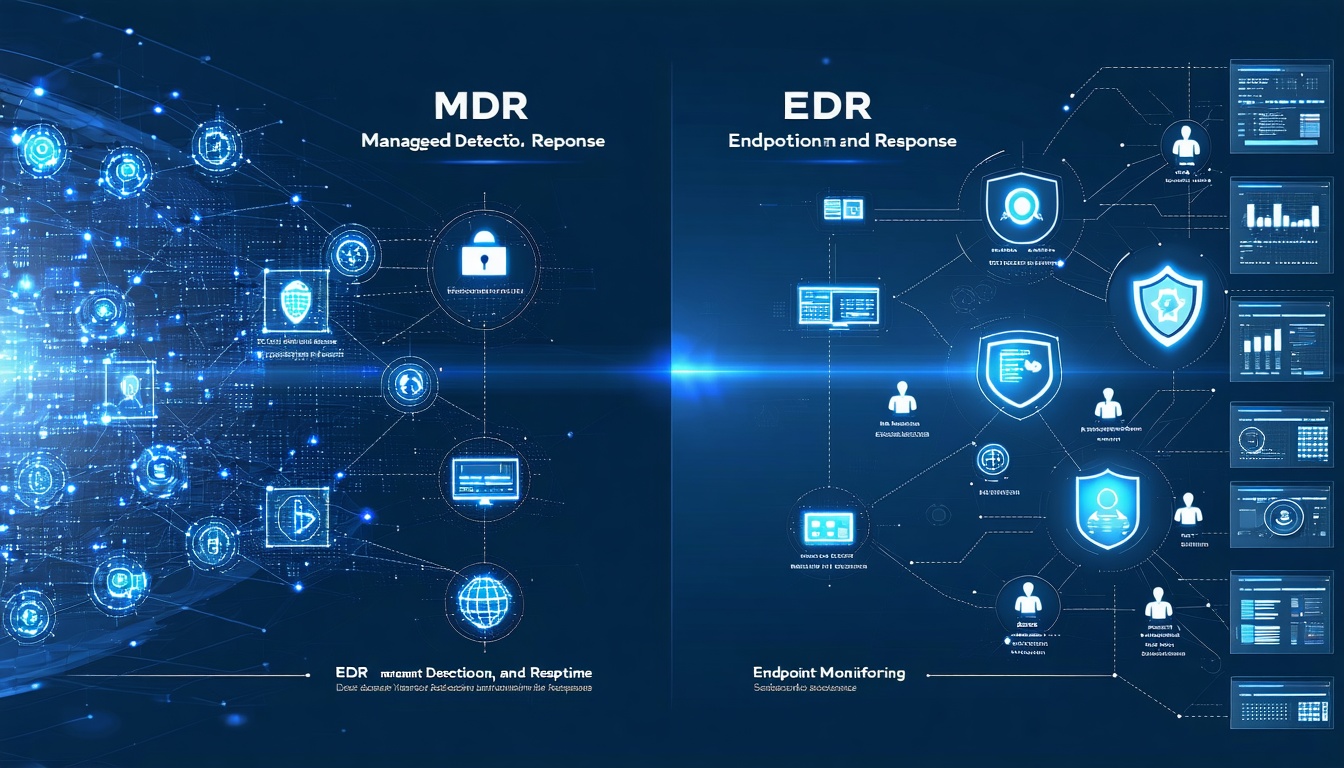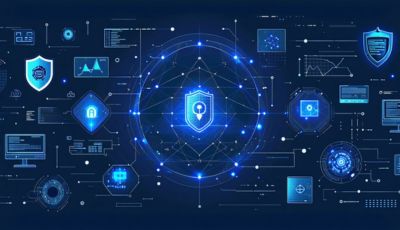When evaluating mdr vs edr solutions, organizations must balance detection scope, response speed, and resource constraints. Endpoint Detection and Response (EDR) tools deliver automated monitoring and remediation at the device level. Conversely, Managed Detection and Response (MDR) leverages advanced technology and human expertise to oversee threats across the entire IT environment. This comparison examines how each approach protects against cyberattacks and which option aligns best with organizational needs.
Understanding Endpoint Security
Defining EDR
Endpoint Detection and Response solutions continuously monitor device-level activity to detect malicious behavior using data analytics, machine learning, and real-time alerts. EDR platforms collect telemetry such as process behavior, file changes, network connections, and user actions. When a threat is detected, the tool can isolate an endpoint, terminate malicious processes, and provide remediation recommendations (NetGain Technologies). EDR’s emphasis on rapid alerting shifts security teams from reactive incident handling to proactive threat management (Augmentt).
Defining MDR
Managed Detection and Response is a comprehensive security service combining EDR-style tooling with 24/7 monitoring, threat hunting, and incident response by specialized analysts. MDR providers deliver continuous threat detection across endpoints, networks, and cloud environments, triaging alerts to minimize false positives and ensuring timely containment (NetGain Technologies, Augmentt). This solution offers organizations the personnel, tools, and expertise needed to expand or replace an in-house security operations center, supporting compliance and resilience objectives (Check Point). For more on the core concept, see mdr meaning.
Comparing Core Capabilities
| Capability | EDR | MDR |
|---|---|---|
| Monitoring Scope | Endpoint devices only | Entire IT environment—endpoints, network, cloud ([NetGain Technologies]) |
| Alert Triage | Automated, high false positives | Analyst-driven, contextual risk scoring (SentinelOne) |
| Threat Hunting | Limited to automated routines | Proactive, manual threat hunting (Augmentt) |
| Availability | 24/7 technology | 24/7 service including human analysts (Palo Alto Networks) |
| Incident Response | Automated containment at endpoint | Full lifecycle—detection, containment, forensic analysis ([SentinelOne]) |
Threat Detection Scope
EDR focuses exclusively on endpoint behavior. In this scenario, threats propagating laterally across networks or targeting cloud assets may go unnoticed. MDR extends visibility by correlating endpoint telemetry with network traffic and cloud logs, uncovering threats that evade device-level sensors.
Response and Remediation
When EDR flags a threat, automated rules can quarantine files or isolate an endpoint. However, complex incidents often require human validation to avoid disrupting legitimate operations. MDR services combine automation with expert analysis to confirm alerts, recommend containment strategies, and coordinate recovery.
Expertise and Management
Organizations deploying EDR must staff skilled analysts to interpret alerts, tune detections, and manage remediation workflows (IEEE Computer Society). MDR relieves internal teams by outsourcing monitoring and response to a dedicated provider, which can be crucial where in-house security operations are limited.
Evaluating Pros and Cons
EDR Advantages
- Provides deep visibility into endpoint process behavior and user actions (Palo Alto Networks)
- Enables rapid automated response to contain threats at their origin
- Offers customizable rules and integration with existing SIEM and XDR platforms
EDR Limitations
- Can generate alert fatigue due to false positives ([SentinelOne])
- Requires a proficient in-house security team to operate effectively ([IEEE Computer Society])
- Offers limited visibility beyond the individual endpoint
MDR Advantages
- Delivers continuous 24/7 monitoring and triage by security experts ([Augmentt])
- Incorporates proactive threat hunting to identify hidden attacks
- Reduces operational burden on internal teams and supports compliance efforts ([Check Point])
- Scales with evolving threat landscapes and resource constraints
MDR Limitations
- Represents a significant operating expense including service fees and licenses ([IEEE Computer Society])
- May introduce vendor reliance and contractual complexities
- Integration with legacy systems and processes can require upfront effort
Choosing the Right Solution
Aligning With Risk Profile
Organizations with simple IT infrastructures and low threat exposure may find EDR sufficient for basic endpoint security. In contrast, businesses facing advanced persistent threats or handling sensitive data often require the broader coverage of an MDR service. Decision-makers may consult the managed detection and response market Outlook for sector-specific trends.
Assessing In-House Capabilities
If a company maintains a mature Security Operations Center, EDR platforms can complement existing workflows. In other cases, organizations lacking dedicated analysts may opt for MDR. IT leaders comparing a third-party model with an internal SOC should review mdr vs soc for detailed tradeoffs.
Considering Budget and Compliance
EDR licensing and staff training represent upfront capital investments, while MDR costs are typically operational. Companies with strict regulatory requirements may evaluate mdr compliance criteria and consult the market guide for managed detection and response services to structure procurement.
Summarizing Hybrid Approach
Many organizations deploy both EDR and MDR to achieve layered defense. An EDR tool delivers granular telemetry feeding into an MDR service for expert analysis and response. This synergy delivers key managed cybersecurity services benefits, including:
- Enhanced threat detection across endpoints, network, and cloud
- Reduced false positives through human-driven alert triage
- Proactive vulnerability management and threat hunting
- Flexibility to integrate with SIEM (mdr vs siem), XDR (mdr vs xdr), or MSSP offerings (mdr vs mssp)
Summary and Conclusion
EDR and MDR address different layers of cybersecurity. EDR excels at delivering automated, device-level visibility and response. MDR expands coverage with continuous monitoring, human expertise, and proactive threat hunting. The choice depends on risk profile, internal resources, budget, and compliance demands. When resources allow, combining both solutions yields a robust security posture capable of adapting to evolving threats.
Need Help With Threat Detection?
Need help with threat detection challenges? We help IT leaders identify the right MDR provider or tailor an EDR deployment to existing operations. Our team evaluates risk profiles, compliance obligations, and resource constraints to recommend solutions aligned with business objectives. Contact us to schedule a consultation and fortify your security posture.






